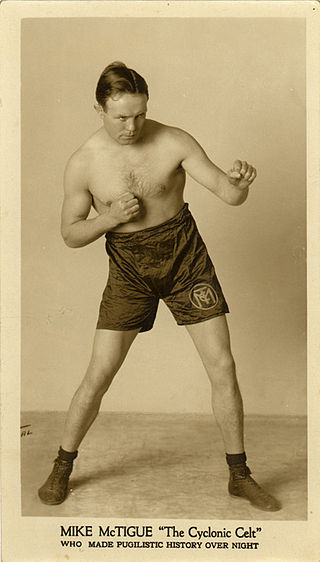By Eric Armit
I occasionally get someone asking me about how I started to write about boxing and although I can’t recall when I first wrote I can recall approximately when I first began to compile records of current boxers and that was in the late 1950’s. That started me thinking about who were the champions in those days, what were their achievements, what was their quality and what was the level of their experience? There were no computers and no internet and no BoxRec. There is nothing that sucks you into following the career of a boxer like filling an index card by hand result by result week after week and year after year. I was my own BoxRec. Having started in the late 1950’s the 1960’s began a new decade of record compiling for me so I thought I would take a trip down memory lane and look at the world champions in the first year of the new decade and what happened to them later and hope you will join me. To some of my age-not too many of them now-it will hopefully bring back some fond memories. To some a good bit younger it might fill in some blanks about fighters heard of but not really known in detail and for younger fans of boxing offer some insight into those who are spoken of in reverence by oldies such as myself.
One of the biggest differences was the absence of the WBC, IBF and WBO. The early forerunner of the WBA was there in the shape of the National Boxing Association (NBA) but no one paid much attention to them and the New York Commission (NYSAC) thought it was the major force in boxing so they occasionally had their own “world” champions. If anyone it was Ring Magazine under Nat Fleischer who ruled on who the world champion was and most of the world went along with Ring’s judgement.
Title fights were held over 15 rounds and how they were scored depended on where the fight was held. If it was in New York or California it was scored on rounds and not points i.e. 8-7, 10-5, 9-6 - Nevada it was on a 5 points per round system i.e. 75-74, 75-73 etc. and in Florida it was the 10 points per round system we use now. In Britain the referee was the sole arbiter and his score was rarely released.
There were the eight traditional divisions heavy, light heavy, middle, welter, light, feather, bantam and fly. There had been some flirting with other weight divisions such as super feather/junior lightweight and super lightweight/light welterweight in earlier years but generally speaking only the NBA and the New York Commission recognized them then and they had died out and were not given any real recognition. However, in 1959 the NBA and NYSAC reintroduced the super lightweight division and the NBA also brought in the super featherweight division.
Even including these two recently introduced divisions there were only a total of seventeen world title fights in 1960. These days there are sometimes almost that many in a month. Can you imagine the dog fights that we would have today if the various cable, streaming, terrestrial channels and the promoters were scrambling to get a share of just seventeen world title fights. When you hear any of these bodies complaining that the proliferation of titles is ruining the sport, try asking if they would like to turn the clock back to 1960 and then try to fill their schedules.
There was a mixture of champions in 1960. Ingemar Johansson was the heavyweight champion having scored a huge upset in 1959 flooring Floyd Patterson seven times and stopping him in three rounds. Maybe not as huge as Andy Ruiz vs. Anthony Joshua I but of that magnitude. In June 1960 Patterson became the first fighter to regain the title when he knocked out Johansson. If they were active today both fighters would be considered as cruiserweights. Patterson weighed 182lbs in their 1959 fight and was a then career highest of 190lbs for the return and Johansson was 196 and 194 ¾lbs respectively.
Patterson had won the heavyweight title in November 1956 at the age of 21, the youngest fighter to win the heavyweight title until 1986 when Mike Tyson beat his record.
Patterson’s title winning fight back in 1956 was against Archie Moore when he knocked out “The Old Mongoose” in five rounds. It is difficult to think of two more disparate roads than these two had traveled in their careers. Patterson had won the heavyweight title at 21 in his thirty-second fight. Moore won the light heavyweight title at the age of 36 in fight No 104 in the seventeenth year of his career. He had his first pro fight before Patterson was one year old. Moore put his title in storage in 1960 making no defenses but having four non-title fights. The WBA stripped Moore of the title in October just before he lost on points to Giulio Rinaldi in Italy. Moore beat Rinaldi in New York in June 1961, a fight that was officially recognized as a title fight by the NYSAC and the EBU and most of the public before Moore gave up any claim to the title in May 1962.
Paul Pender was a somewhat underwhelming middleweight champion having beaten Sugar Ray Robinson in January and he made a successful defense against Robinson in June. Robinson had won the title in 1958 in a historic battle against Carmen Basilio that was voted “Fight of the Year”. He had only one fight in 1959 and the NBA stripped him of the world title for inactivity. The NYSAC had continued to recognize Robinson as having the majority of boxing people, and he was in his fifth reign as middleweight champion. Again there was a contrast with Pender in fight No 43 of his career and a 38-year-old Robinson losing the title in fight No 152 in his twentieth year as a pro. Pender was unfortunate to be following guys such as Basilio and Robinson and was always going to suffer by comparison.
Going into 1960 Don Jordan was welterweight champion having dodged the clutches of Frankie Carbo. Convincing wins in title defenses in 1959 against Virgil Akins and unbeaten Denny Moyer had boosted his stock but then it plummeted as he was knocked out by Luis Federico Thompson in December 1959 and then in June 1960 he was beaten on points by modest Candy McFarland who had lost three of his previous four fights. Benny “Kid” Paret took the title from Jordan with a unanimous points decision in May. The rest of the year was a switchback for Paret as he lost a split decision to Denny Moyer in a non-title match but retained the title with a win over Thompson in December. In 1961 Paret would go on to lose the title to Emile Griffith then beat Griffith in a return to close 1961 as welterweight champion but in December 1961 lost to Gene Fullmer in a challenge for the NBA middleweight title. On March 23 1962 in his third fight with Griffith Paret took a savage beating being stopped in the twelfth round and lost his title and his life. He was in a coma and never regained consciousness after the stoppage before dying on 3 April.
“Old Bones” Joe Brown held the lightweight title. The year started and ended badly for him. In non-title fights in January he did a “no mas” when body punches from Ray Portillo left him with two separated ribs and in December he was floored and outpointed by Giordano Campari. Brown showed his class when it counted as he retained the title in October with a comfortable decision over Cisco Andrade. Brown had won the title in May 1956 at the age of 30 and in fight No 108 of his career. Not being “connected” meant that it had taken him almost twenty years to get the title shot.
Davey Moore “The Springfield Rifle” held the featherweight title. He had won the title and defended it in 1959 with inside the distance wins over Nigeria’s first ever world champion Hogan Bassey. Moore was very active in 1960 fitting in seven fights. He retained the title with a wide unanimous decision over Kazuo Takayama in Japan. Unlike today in 1960 champions regularly engaged in non-title fights and five of Moore’s six non-title fights were staged outside the USA. Moore won five of those non-title bouts but suffered his first inside the distance loss in March 1960 when big punching Venezuelan Carlos Hernandez reportedly fractured Moore’s jaw and the champion retired after seven rounds of their fight in Caracas.
The bantamweight title was held by Jose Becerra. The heavy puncher from Guadalajara entered the year on the back of a 19 bout winning streak with 16 of those wins by KO/TKO. He had won the title in July 1959 by knocking out Alphonse Halimi in eight rounds. He retained the title with a repeat win over Halimi in February when after being down in the second round and trailing on all three cards he knocked Halimi out in the ninth round. He made another defense in Japan in May when he won a split decision over Kenji Yonekura. Two judges had Becerra winning by six and four points and the Japanese judge saw Yonekura the winner by five points! Like Moore, Becerra also had some non-title fights. He won three but the fourth was a shocking kayo loss in August against unfancied Eloy Sanchez who had lost his previous three fights. Becerra was so disappointed with his loss that he retired and in November Brazilian Eder Jofre knocked out Sanchez to win recognition by the NBA taking his record to 35-0-3. Jofre went on to unify the titles winning the WBC belt and retaining the WBA title (the NBA had morphed into the WBA in 1962) and also won the WBC featherweight title on his way to eventual recognition as one of the greatest bantamweights of all time.
Going into 1960 Argentinian Pascual Perez was flyweight champion. The little South American had won a gold medal at the Olympic Games in London in 1948 before turning pro in 1952 and when he beat Yoshio Shirai in November 1954 he became Argentina’s first world champion. As the year started he was 33 years old, had defended his title nine times and had a 54-1-1 record. His glorious reign came to an end in April 1960 when he dropped a split decision in Bangkok by Pone Kingpetch in a fight where Ring Magazine editor Nat Fleischer was a judge. Fleischer scored Kingpetch a clear winner. The size difference-Perez was 4’11” and Kingpetch 5’6 ½”- just proved too much for Perez to overcome. The Thai stopped Perez in eight rounds in a return fight in September 1960. Kingpetch eventually lost and then regained his title in fights against Fighting Harada before being recognized as the inaugural WBC flyweight champion in 1962. He lost both his WBA and WBC recognition when he was beaten by Hiroyuki Ebihara in 1963 but then regained them with a win over Ebihara in 1964 only to lose them to Salvatore Burruni in 1965.
As I said at the beginning of 1960 the super lightweight and super featherweight titles were reintroduced by the NBA. The super lightweight/light welterweight title had died out in 1947 with Tippy Larkin the last title holder. On its resurrection in June 1959, Carlos Ortiz won NBA and NYSAC recognition with a second round cuts stoppage of Kenny Lane. In 1960 Ortiz retained the title with a tenth round kayo of 31-0 Mexican Battling Torres in February and a split decision over Italian Dulio Loi in June which was only Loi’s second defeat in 111 fights. Loi had his revenge taking the title from Ortiz on a majority decision in September 1960. These two would meet again in May 1961 with Loi flooring Ortiz and winning a wide unanimous verdict. The NBA morphed into the WBA and Loi lost the WBA title to Eddie Perkins who floored Loi twice on the way to a points win in September 1962 but Loi rebounded and regained the title in December before retiring as still champion in January 1963 with a 115-3-8 record.
The super featherweight/junior lightweight title had fallen into disuse when Sandy Sadler was champion back in 1951 and when the title was again contested in 1959 Harold Gomes climbed off the floor four times and outpointed Paul Jorgenson for the NBA belt. He lost the title to Filipino great Flash Elorde in March 1960. Elorde had lost on a cut against Sandy Saddler for the featherweight title in 1956 but in front of 36,000 wildly ecstatic fans at the inauguration of the Araneta Coliseum in Quezon City Metro Manila Elorde destroyed Gomes flooring him six times before being knocking him out in the seventh round. They met again in August with Elorde putting Gomes down twice and the fight was over in 80 seconds. When the WBC came into being they recognized Elorde as their champion on 14 February 1963 and just two days later he outpointed Johnny Bizzarro in defense of the WBA and WBC titles. In an achievement that could not happen today at the same time as winning and losing in world title fights at super featherweight Elorde had three terms as OPBF lightweight champion going 17-2 in OPBF title fights. A forerunner and inspiration to budding Filipino boxers who would strive to follow in his footsteps.
With so many sanctioning bodies and so many weight divisions it would not be impossible to have had fifty fighters holding a version of a world title in any year. In 1960 in the 10 division only 17 fighters held a world title: Ingemar Johansson, Floyd Patterson, Archie Moore, Ray Robinson, Paul Pender, Don Jordan, Benny Paret, Joe Brown, Davey Moore, Jose Becerra, Eder Jofre, Pascual Perez, Pone Kingpetch, Carlos Ortiz, Dulio Loi, Harold Gomes and Flash Elorde. In 1960 four champions Archie Moore, Robinson, Loi and Brown all had more than 100 fights to their name, something we will never see again. Something we are more familiar with is that in the list of champions there were two former Olympic gold medal winners, Patterson at middleweight, Perez at flyweight. Davey Moore and Ingemar Johansson represented the USA and Sweden respectively at the 1952 Olympics and Eder Jofre boxed for Brazil at the 1956 Olympics. Tragically within the next three years two champions Paret and Davey Moore would go on to lose their lives when defending their titles.
Of those title holders in 1960, Ingemar Johansson, Floyd Patterson, Archie Moore, Sugar Ray Robinson, Joe Brown, Eder Jofre, Pascual Perez, Carlos Ortiz and Flash Elorde would go on the be enshrined in the International Boxing Hall of Fame. 1960-A year of champions.
Support The Weigh-In: Your Home for Combat Sports by Shopping World Wrestling Entertainment (WWE) Product!




